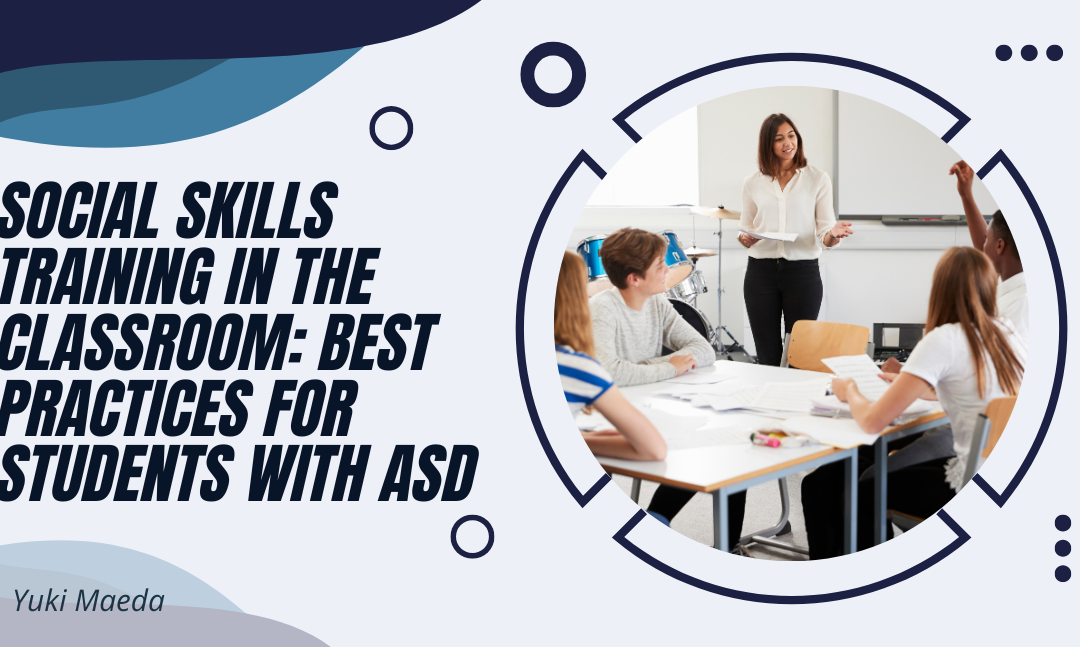Social skills are an essential part of a student’s overall development, and for learners with autism spectrum disorder (ASD), structured training in this area can significantly enhance their ability to interact, communicate, and thrive in both academic and social settings. While many students acquire social skills naturally through observation and practice, students with ASD often need direct instruction and repeated opportunities to learn and generalize these skills. The classroom provides an ideal setting for this type of learning, as it offers real-life situations and consistent support from educators.
Social skills training for students with ASD must be intentional, individualized, and grounded in evidence-based practices. These interventions should focus on specific goals such as initiating conversations, understanding nonverbal cues, managing emotions, and forming friendships. To be effective, social skills instruction should be integrated into the daily routine and embedded within the broader curriculum rather than treated as an isolated lesson.
One best practice in social skills instruction is the use of modeling. Teachers and peers can demonstrate appropriate social behavior in a variety of contexts, allowing students with ASD to see exactly what is expected. Video modeling is especially effective, as students can repeatedly watch and analyze social scenarios at their own pace. These videos can depict everyday situations, such as greeting a classmate or asking for help, and break down the interaction into manageable steps.
Role-playing and rehearsal are also powerful tools. By practicing social interactions in a safe and supportive environment, students gain confidence and improve their ability to apply these skills in real-life situations. Educators can create structured activities where students role-play common school experiences, providing immediate feedback and reinforcement. Over time, students become more comfortable navigating social exchanges independently.
Visual supports play a critical role in social skills training. Many students with ASD are visual learners who benefit from charts, cue cards, and social stories that illustrate specific behaviors and responses. Social stories, for example, describe a social situation and offer guidance on how to behave appropriately. These narratives are personalized and can help reduce anxiety by preparing students for unfamiliar situations or expectations.
Peer-mediated interventions are another effective strategy. In these programs, typically developing students are trained to support the social development of their peers with ASD. This might involve prompting, modeling, or simply engaging in conversation. These peer partnerships can foster authentic social experiences and help students with ASD feel included and connected. Moreover, peer involvement encourages a culture of empathy and acceptance throughout the classroom.
Teachers must also create an environment that supports social learning. This means structuring the classroom to encourage collaboration and interaction. Group projects, cooperative learning activities, and structured playtime can all provide valuable opportunities for students to practice social skills. Clear expectations, predictable routines, and consistent rules help students feel safe and understand how to engage appropriately.
Social-emotional learning (SEL) programs can be adapted to meet the needs of students with ASD. These programs often include lessons on self-awareness, empathy, and relationship skills, which align closely with the goals of social skills training. By incorporating SEL into the curriculum, teachers provide a framework that supports the development of both social and emotional competencies.
Ongoing assessment is important to ensure that social skills instruction is effective. Teachers can use observation checklists, self-assessment tools, and progress monitoring data to evaluate student growth. This information helps guide instruction and ensures that interventions remain aligned with student needs.
Family involvement is also essential. Parents and caregivers can reinforce social skills at home by practicing scenarios, modeling appropriate behavior, and encouraging social opportunities outside of school. Regular communication between school and home ensures consistency and helps students apply their learning across environments.
Professional development for educators is critical to the success of social skills training. Teachers need to understand the unique social and communication challenges faced by students with ASD and be equipped with the tools and strategies to support them effectively. Training in behavioral techniques, communication methods, and autism awareness builds educator confidence and improves outcomes for students.
In conclusion, social skills training in the classroom is a vital component of education for students with autism. Through modeling, role-play, peer support, and visual aids, educators can provide the structured learning experiences these students need to build meaningful relationships and succeed in school. When social learning is embraced as part of everyday instruction, students with ASD are empowered to grow, connect, and thrive in inclusive classroom communities.

